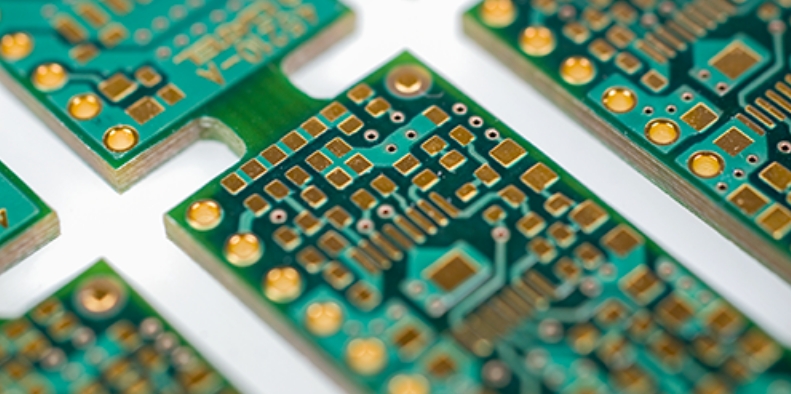Are you an electronics enthusiast or a professional engineer looking to bring your digital dreams to life? If that's the case, unveiling the hidden realm of PCB prototype production could be the glimpse into the magic that you're seeking. Understanding the importance of PCB prototypes and recognizing their pivotal function in the prototype creation phase in electronics is crucial for developing prototype boards that meet strict quality standards.

Quick test: What does the newest phone in your pocket share with the Mars Rover? They all started their journey as a custom PCB prototype. A prototype is essentially the first draft—a chance to test and refine before committing to full production, potentially saving time and resources.
In the world of making electronics, making a test model is very important. Every gadget that works well started as a test model. This helps to check if the idea actually works and to find any problems early on.
The journey from a nascent concept to a working prototype in PCB prototyping encompasses multiple phases. This includes pondering over design elements, choosing the appropriate materials, and applying manufacturing methods, all the while maintaining a commitment to superior quality standards.
The first step in creating a reliable PCB prototype is designing an accurate and efficient schematic. This detailed plan serves as the blueprint for your PCB layout.
Advanced software tools aid designers in creating precise schematics that later transform into the physical prototype PCBs.
This crucial phase involves turning theoretical concepts into workable designs, and carefully considering the arrangement of components to ensure optimal performance.
Selecting the right materials and components is foundational to the functionality and longevity of the prototype board. Quality components ensure reliable performance under various conditions.
Once the materials are chosen, the layout phase begins. This involves strategically arranging components to minimize noise and maximize signal integrity.
The manufacturing process transforms the design into a physical board, with steps such as etching, applying solder masks, silkscreen printing, and final assembly.
The etching process meticulously removes excess copper to reveal the paths that will become the electrical lanes of the prototype PCB.
A critical quality standard, the solder mask, is applied to insulate and protect the copper traces, ensuring that they function correctly without interference or shorts.
Silkscreen printing provides important information on the PCB for assembling and testing, contributing to the quality standards of the prototype.
The final step is assembling the prototype, integrating all components, and preparing the board for testing.
Innovation in PCB prototype fabrication techniques continues to streamline the process, providing faster turnaround times without compromising the prototype's quality.
Automated techniques achieve consistent high-quality results while enabling manufacturers to offer quick turn PCB services, with production times as fast as 24 hours in some cases.
3D printing has significantly reduced the turnaround times for prototyping, allowing for the rapid creation of complex, multi-layered prototype PCBs.
Finding a fabricator that balances quality, speed, and cost is essential, especially one that can provide a quick turn PCB service without sacrificing quality standards.
Choosing a service that follows stringent quality standards and possesses necessary certifications is of utmost importance.
When the prototype must be developed swiftly, choosing a service with competitive pricing and fast, reliable turnaround times, such as fast-track options, is key.
Services offering expedited production can quickly deliver quick-turn PCBs, crucial when project timelines are tight.
A service that scales costs effectively with bulk orders will help manage budget constraints while delivering quality prototype boards.
Even with advancements in technology, certain challenges, such as design inaccuracies and time management, can pose risks to the viability of prototype PCBs.
In PCB prototyping, precision is non-negotiable. A small error can lead to a fundamental flaw in the prototype.
Choosing the wrong materials can lead to prototypes that fail to meet performance and durability standards.
Effective time management is essential to ensure prototype PCBs are produced within the desired timeframe, especially when working with tight deadlines.
Adhering to best practices such as rigorous testing and effective communication with fabricators can greatly increase the chances of a successful prototype.
Thorough testing ensures that any issues with the PCB are identified and addressed before moving into mass production.
An iterative process, involving consistent feedback, is critical to refining the PCB design for optimal functionality.
Clear communication with fabricators helps ensure that the final product matches the design specifications and quality standards.
The future of PCB prototyping is marked by continuous technological advancements that promise efficiency increases and cost reductions.
Emerging innovations, including new materials and design methodologies, are set to enhance the capabilities of PCB prototyping.
AI is anticipated to be a game-changer in predicting design errors, optimizing schematics, and personalizing PCB prototyping services.
Bringing a PCB from concept to reality is an intricate process fraught with challenges, yet it offers a rewarding outcome with the right approach, tools, and partners.
The most crucial aspect is ensuring that the design meets the specific functional requirements and adheres to industry quality standards.The utilization of exact schematics, coupled with the selection of suitable materials and components, is crucial to the success of this endeavor.
3D printing has enabled quicker turnaround times and the ability to produce complex, multi-layered prototype PCBs with high precision, speeding up the iterative design process significantly.
Fast-track options are crucial for meeting deadlines and achieving rapid prototyping, which can be essential in time-sensitive projects and competitive markets.
AI is expected to play a pivotal role in PCB prototyping by optimizing design processes, predicting potential errors before fabrication, and enabling personalized manufacturing adjustments.
A common mistake is designing without considering the manufacturability, leading to a PCB that cannot be efficiently or cost-effectively produced. To avoid this, engage with fabricators early in the design process to align the design with manufacturing capabilities and constraints.
For further information or to begin your PCB prototyping project with a competitive price and assured high quality, please contact us. Our expert teams are ready to assist you on your journey from prototype to production.